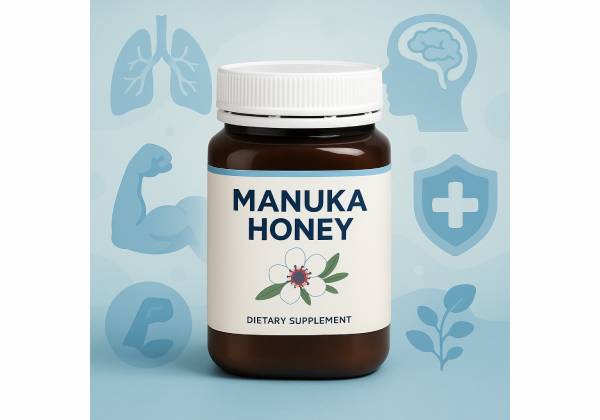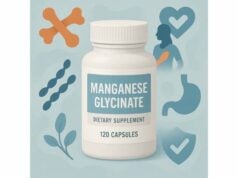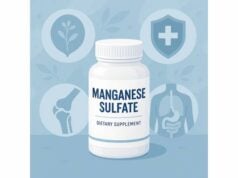
Manuka honey is a monofloral honey made by bees foraging the blossoms of Leptospermum species native to New Zealand and parts of Australia. It stands out for its non-peroxide antibacterial activity, largely attributed to methylglyoxal (MGO), and it is graded for potency and authenticity using systems such as MGO values and the Unique Manuka Factor (UMF). Beyond a pleasant taste, manuka honey offers practical, people-first applications: as a soothing addition for upper-airway comfort, as a dental-friendly sweetener in moderation, and—most notably—as a medical-grade dressing for difficult-to-heal wounds under clinical guidance. Still, it is not a cure-all. Benefits depend on quality, dose, and the problem you are trying to solve. Choosing a certified product, knowing when topical medical-grade honey is appropriate, and using sensible serving sizes help you get real value while avoiding common pitfalls like overuse, infant exposure, or unrealistic expectations. This guide translates the science and the day-to-day decisions into clear steps so you can decide if, how, and when manuka honey fits your goals.
Key Takeaways
- Non-peroxide antibacterial activity relates to MGO content and validated grades (e.g., UMF); higher values signal stronger potency.
- Best-supported uses: medical-grade honey dressings for certain wounds under professional care; soothing intake for throat comfort.
- Typical oral use: 1–2 teaspoons (5–10 g) once or twice daily; topical use requires sterile, medical-grade honey dressings.
- Do not give honey to infants under 12 months because of infant botulism risk.
- People with diabetes, bee or honey allergies, or on low-sugar diets should use manuka honey cautiously and consult a clinician if unsure.
Table of Contents
- What is manuka honey?
- Proven benefits and limitations
- How to use it and how much to take
- Picking quality: UMF and MGO explained
- Common mistakes and troubleshooting
- Research and evidence summary
What is manuka honey?
Manuka honey is a specialty honey primarily produced in New Zealand (and in some regions of Australia) when bees collect nectar from Leptospermum (manuka) flowers. Unlike most honeys, it retains meaningful antibacterial activity even when the usual peroxide-based mechanisms are neutralized. That property—non-peroxide activity—comes largely from methylglyoxal (MGO), formed over time from dihydroxyacetone (DHA) naturally present in the nectar. Genuine manuka honey also contains leptosperin and other chemical markers used to authenticate its floral origin.
Manuka’s composition gives it a distinctive profile:
- Antibacterial strength: Linked to MGO levels; higher MGO generally means stronger in-vitro antibacterial action.
- Low water activity and high sugar content: These features inhibit many microbes and help explain honey’s long shelf stability.
- Acidity (typical pH ~3.2–4.5): An unfavorable environment for many pathogens.
- Viscoelastic texture: Creates a protective physical barrier when used as a wound dressing.
Manuka appears across three broad categories of use:
- Culinary and household: A premium honey with floral, mineral, and caramel notes. People use small amounts for taste and throat comfort.
- Wellness intake: Individuals take measured servings for day-to-day soothing, oral comfort, or to support routine during cold season.
- Clinical and first aid: Medical-grade honey (MGH)—gamma-irradiated, standardized, and sterile—is used in dressings, gels, and alginates for complex or infected wounds, burns, and graft sites. This is distinct from grocery honey and follows protocols that emphasize debridement, exudate control, and infection management.
Manuka is not a single, uniform product; label grades, processing, and storage influence activity. Temperature and time shift DHA to MGO; overly warm storage can also raise HMF (a freshness marker) and degrade quality. Authenticity matters: certification programs and batch testing are designed to curb adulteration and mislabeling, which have historically affected the global honey market.
Proven benefits and limitations
Wound care (medical-grade, topical):
The strongest evidence for manuka honey sits in wound management with sterile medical-grade honey dressings. In this setting, honey’s osmotic effect helps draw exudate, the low pH can promote oxygen release from hemoglobin, and the non-peroxide antibacterial activity (driven in part by MGO) suppresses a broad spectrum of pathogens, including biofilm-forming organisms. Clinicians employ honey as a primary or adjunct dressing for pressure ulcers, venous leg ulcers, diabetic foot ulcers, donor sites, partial-thickness burns, and radiation-damaged skin. Benefits reported in systematic evaluations include improved debridement, reduced odor, favorable granulation, and acceptable patient comfort. It is not a universal solution: wound etiology, perfusion status, and comorbidities determine when honey is appropriate, and dressings are changed on a defined schedule with close monitoring.
Upper-airway and throat comfort (oral intake):
Honey coats the oropharynx and can modulate cough reflex sensitivity in some contexts. For non-infants, a warm drink with lemon and honey is a long-standing home measure that many find soothing. While traditional, this use is best framed as symptom comfort rather than disease treatment; persistent or severe symptoms need medical evaluation. Because manuka is more expensive than standard honeys, consumers often choose based on taste preference or perceived potency.
Antibacterial activity (in vitro and ex vivo):
Manuka honey’s activity spans gram-positive and gram-negative bacteria, with gram-positive organisms often more susceptible in laboratory conditions. The MGO concentration correlates with antibacterial measures such as MIC and zone of inhibition. Honey’s multi-factorial composition makes it difficult for microbes to develop stable resistance under typical exposure conditions. This does not mean oral manuka will sterilize the gut or that topical grocery honey will clear infections; context and product grade are critical.
Oral health adjuncts:
In small, practical uses (lozenges, rinses), manuka honey can be incorporated into dental-friendly formulations because its low water activity and non-fermentable profile in the product format may reduce cariogenic potential compared with sucrose. Real-world effects depend on how the product is built and used; brushing, fluoride exposure, and standard hygiene remain foundational.
Gastrointestinal and metabolic angles:
Manuka honey is primarily sugar (fructose and glucose). It is not a low-carb food and should not be positioned as a glucose-lowering agent. While laboratory and preclinical studies explore antioxidant and anti-inflammatory effects, robust human trials for chronic metabolic outcomes are limited. If you live with diabetes or prediabetes, treat manuka as a flavoring in teaspoon amounts, account for carbohydrates, and monitor your usual metrics.
Bottom line on scope:
- Strongest domain: Medical-grade topical wound care as part of a broader plan.
- Everyday comfort: Throat soothing and culinary enjoyment in modest servings.
- Limitations: Not a stand-alone cure for infections, metabolic disease, or chronic cough; do not substitute for a clinician’s advice in complex conditions.
How to use it and how much to take
Everyday oral use (non-infants):
- Serving size: Start with 1 teaspoon (≈5 g) once or twice daily, taken straight or stirred into warm (not boiling) liquids. If comfortable and desired, increase to 2 teaspoons (≈10 g) per serving. Many people find 5–10 g sufficient for taste and throat comfort.
- Timing: For throat soothing, use as needed, especially in the evening if cough is disruptive. For general culinary use, treat manuka like any premium honey: drizzle over yogurt or oats, or blend in a warm beverage.
- Pairing: Combining a small serving with lemon and warm water offers a balanced sweet-acid profile and palatability.
Topical use (wound care):
- Use only medical-grade honey dressings for open wounds, burns, ulcers, or surgical sites. These are sterilized (often gamma-irradiated), standardized for activity, and packaged in dressings or tubes designed for clinical application.
- Application basics (under professional guidance): Cleanse and, if indicated, debride the wound; apply a honey-impregnated dressing or a measured layer of medical-grade honey with a secondary absorbent pad; change dressings per exudate level (commonly once daily initially, then less frequently).
- Do not apply grocery honey to open wounds. Non-sterile products can carry spores and particulates unsuitable for compromised tissue.
Kitchen and recipe notes:
- Heat sensitivity: Prolonged high heat can degrade delicate aromatics and shift chemical markers. Add manuka toward the end of cooking or use it raw to preserve flavor.
- Texture and sweetness: Manuka is viscous and moderately sweet; it brings floral and earthy notes that pair well with herbal teas, soft cheeses, and sourdough breads.
- Dental perspective: Any free sugar can contribute to caries risk with frequent exposure; enjoy manuka in discrete servings rather than many small sips across hours.
Who benefits from a structured plan:
- People managing wound care under a clinician: clear protocols, product choice, and follow-up are essential.
- People with frequent sore throats: Manuka may fit into a supportive routine (hydration, humidified air, rest) but does not address bacterial tonsillitis requiring antibiotics.
When to seek care instead of self-management:
- Wounds with spreading redness, warmth, or systemic symptoms (fever, malaise).
- Cough lasting beyond a few weeks, or accompanied by chest pain, shortness of breath, or high fever.
- Allergic reactions (wheezing, hives, facial swelling) after consuming honey.
Picking quality: UMF and MGO explained
What MGO tells you:
MGO is a quantified measure (mg/kg) of methylglyoxal in the honey. Higher MGO indicates stronger non-peroxide antibacterial activity in laboratory assays. Labels commonly show values such as MGO 100+, 250+, 400+, 550+. While MGO alone does not guarantee authenticity or freshness, it is a practical potency marker consumers can understand.
What UMF means:
The Unique Manuka Factor (UMF) is a third-party certification program that verifies potency and authenticity by measuring a set of chemical markers typically including MGO (potency), DHA (precursor), leptosperin (authenticity marker), and freshness indicators. UMF grades (e.g., UMF 5+, 10+, 15+, 20+) broadly track with higher MGO, but they also incorporate authenticity and quality controls. Selecting a UMF-certified product helps reduce the risk of adulteration or mislabeled imports.
Choosing a grade for your purpose:
- Culinary and daily soothing: UMF 5+ to 10+ (or roughly MGO 100–260+) is usually sufficient for taste and comfort.
- Occasional topical household use (intact skin only): Any culinary grade is fine for masks or spot applications on intact skin if you tolerate honey; rinse thoroughly.
- Clinical wound care: Use medical-grade honey dressings explicitly labeled for wound management—these are outside the retail UMF/MGO jar framework.
Authenticity and storage tips:
- Batch testing and origin: Reputable jars display batch numbers and origin (e.g., New Zealand) and may offer lab reports.
- Avoid heat: Store at room temperature, away from direct sunlight. Do not microwave in the retail jar.
- Crystallization: Natural and reversible. Place a sealed jar in warm (not hot) water to re-liquefy.
Price–value reality check:
Manuka commands a premium. If your goal is simply to sweeten tea, a high-quality local honey can be more economical. Choose manuka when you value its distinctive flavor, graded potency, or when your clinician recommends medical-grade honey for wound care.
Common mistakes and troubleshooting
Using grocery honey on open wounds:
Regular manuka honey, even premium jars, is not sterile. For open wounds, burns, ulcers, or post-operative sites, use medical-grade honey dressings only. If in doubt, ask your clinician or pharmacist to confirm the product category.
Giving honey to infants under 12 months:
Never give any honey, including manuka, to infants younger than one year because of infant botulism risk. Spread this message widely—well-meaning caregivers sometimes overlook it in traditional remedies.
Assuming “higher number is always better” for all uses:
Very high MGO or UMF grades may be overkill for simple culinary purposes. Match the grade to the job to avoid unnecessary cost.
Overusing honey for chronic cough or sore throat:
If symptoms persist beyond a few weeks or come with red-flag signs (fever, chest pain, breathing difficulty, blood), seek medical evaluation. Honey is a soothing measure, not a substitute for diagnosing underlying illness.
Forgetting about carbohydrates:
Manuka is sugar-dense. People with diabetes or those tracking carb intake should measure servings (e.g., 5–10 g) and account for them in meal planning.
Expecting manuka to replace standard wound care steps:
Even with medical-grade honey, best outcomes depend on wound bed preparation, off-loading for plantar ulcers, compression for venous disease, and management of glycemic control in diabetes. Honey is an adjunct within a comprehensive plan.
Experiencing skin stickiness or mess with DIY masks:
If you use manuka cosmetically on intact skin, apply a thin layer, limit contact time (e.g., 10–20 minutes), and rinse with lukewarm water. Patch test first if you have reactive skin.
Taste and texture troubleshooting:
If manuka seems too assertive, blend half-and-half with a milder honey in recipes. For beverages, dissolve in warm—not boiling—liquid to preserve aromatics and reduce graininess if crystallized.
Safety, side effects, and who should avoid
Who must avoid oral honey:
- Infants under 12 months: Risk of infant botulism. No exceptions, including pacifier dips or “tiny tastes.”
- Confirmed honey or bee product allergy: Risk of allergic reaction; avoid and seek alternatives.
Use with caution and speak with a clinician if:
- You live with diabetes or prediabetes: Manuka contributes carbohydrates. Stick to teaspoon servings, time them with meals, and monitor your usual metrics.
- You have severe pollen allergies or oral allergy syndrome: Rarely, residual pollen proteins may provoke symptoms.
- You are pregnant or breastfeeding: Honey is commonly consumed in foods, but for medicinal doses or topical use on compromised skin, discuss with your clinician.
Topical safety pointers:
- For open wounds, burns, ulcers, or surgical sites, use medical-grade honey dressings to avoid contamination risk.
- Expect a transient stinging sensation in some wounds, particularly when exudate is high or tissue is exposed. If pain is significant or increasing, or if the wound worsens, contact your care team.
- Change dressings as directed; unmanaged exudate under any occlusive or semi-occlusive dressing can macerate surrounding skin.
Drug and therapy considerations:
- Antidiabetic medications: Honey consumption affects carbohydrate totals; coordinate with your care plan.
- Warfarin or antiplatelet therapy: Honey is not a known anticoagulant, but changes in diet and supplement use should be shared with your prescriber.
- Topical antibiotics and antiseptics: Medical-grade honey can be compatible with many regimens; clinicians may simplify dressings to limit polypharmacy on the wound bed.
When to seek medical care promptly:
- Wounds with spreading redness, foul odor, unexpected pain, or fever.
- Persistent cough, chest pain, shortness of breath, or coughing up blood.
- Signs of allergic reaction after honey ingestion or topical exposure (wheezing, hives, facial swelling).
Responsible use checklist:
Measure servings, match grade to purpose, never give to infants, and reserve medical-grade products for clinician-guided wound care. These simple steps capture most of the real-world safety wins.
Research and evidence summary
Antibacterial mechanisms and potency markers:
Manuka honey’s standout feature is its non-peroxide antibacterial activity. MGO concentration correlates with laboratory antibacterial measures, and authenticity markers (e.g., leptosperin) help confirm true manuka origin. Reviews covering clinical microbiology emphasize that honey’s multi-target actions—osmotic effect, acidity, MGO-related activity, and other phytochemicals—make stable resistance less likely in standard use. These mechanistic insights justify graded labeling (UMF, MGO) and explain why products differ in performance.
Wound care literature:
Modern reviews and practice overviews describe medical-grade honey as a versatile adjunct in wound management. Reported advantages include support for autolytic debridement, odor control, and granulation tissue formation, with acceptable patient comfort and low risk of serious adverse events when appropriately used. Evidence spans case series, controlled trials in specific ulcer types, and meta-analyses that, while heterogeneous, generally favor honey for certain endpoints (e.g., time to debridement, bacterial burden) in defined populations. Clinical success depends on broader wound care fundamentals: off-loading, compression, glycemic control, and vascular assessment.
Randomized and controlled data points:
Targeted trials investigate honey-impregnated dressings versus conventional options in diabetic foot ulcers and other wounds. Results vary by ulcer complexity and comparator, but many studies report non-inferiority or advantages for selected outcomes. Not every trial shows a dramatic difference in final closure rates; in some, honey primarily accelerates early phases (debridement or bacterial load reduction) rather than guaranteeing faster complete healing.
Respiratory and cough comfort:
Evidence supports honey as a symptomatic cough soother in children older than one year and in adults, with timing near bedtime commonly used in studies. This effect is best classified as comfort support rather than pathogen eradication, and medical evaluation is warranted for persistent or severe symptoms.
Safety themes from public health guidance:
Public health agencies consistently advise no honey for infants under 12 months due to infant botulism risk. For older children and adults, honey is generally safe in food-like amounts unless allergy or medical conditions dictate otherwise. Clinical products used on wounds are sterilized and standardized; grocery honey is not.
Evidence gaps and next steps:
- More head-to-head trials comparing medical-grade honey with modern advanced dressings across clearly defined wound subtypes would sharpen guidance.
- Standardized reporting of MGO/UMF alongside outcomes could help link lab potency to clinical effect sizes.
- Long-term metabolic outcomes from small, structured honey servings in people with diabetes or prediabetes remain understudied; prudent, individualized use is still the rule.
Practical synthesis:
Choose medical-grade honey for wounds under clinician guidance, and modest servings of culinary manuka for taste and throat comfort. Let label grades guide expectations, and keep safety fundamentals—especially infant precautions—front and center.
References
- Antibacterial activity of Manuka honey and its components 2018 (Review)
- Medical-Grade Honey Is a Versatile Wound Care Product and an Innovative Bioactive Wound Care Matrix 2024 (Review)
- Correlation of the antibacterial activity of commercial manuka and Leptospermum honeys from Australia and New Zealand with methylglyoxal content and other physicochemical characteristics 2022 (Experimental Study)
- Honey in wound healing: An updated review 2021 (Review)
- Botulism Prevention 2024 (Public Health Guidance)
Medical Disclaimer
This article is educational and does not replace personalized medical advice, diagnosis, or treatment. Do not use manuka honey as a substitute for professional care, especially for chronic wounds, severe infections, or persistent respiratory symptoms. Never give honey to infants under 12 months. If you have diabetes, allergies to bee products, or other medical conditions, consult your clinician before using manuka honey in medicinal amounts. If you experience signs of infection, allergic reaction, or worsening symptoms, seek medical attention promptly.
If this guide was helpful, please consider sharing it on Facebook, X (formerly Twitter), or any platform you prefer, and follow us for more evidence-informed health explainers. Your support helps us continue producing careful, people-first content.










